|
Wednesday, April 30, 2014
Boxer Blames Blisters for Bout Loss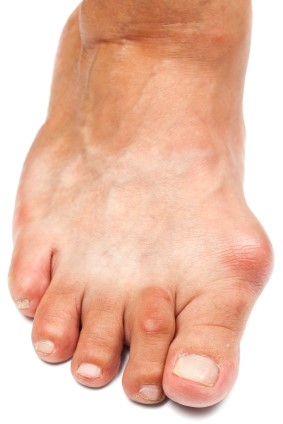 Back in 2012, boxer Timothy Bradley took a heavy loss after facing Manny Pacquaio. Bradley states that fighting against the boxer-politician was incredibly
difficult from the start. Bradley claims he lost because he was suffering from blisters on his feet. Bradley claims these blisters came up as a result of going without socks in the ring, a practice that legend
Mike Tyson is said to have done. Bradley’s coach claims that his reasoning is an excuse and made his disapproval verbally
known in a profanity-filled tirade. Back in 2012, boxer Timothy Bradley took a heavy loss after facing Manny Pacquaio. Bradley states that fighting against the boxer-politician was incredibly
difficult from the start. Bradley claims he lost because he was suffering from blisters on his feet. Bradley claims these blisters came up as a result of going without socks in the ring, a practice that legend
Mike Tyson is said to have done. Bradley’s coach claims that his reasoning is an excuse and made his disapproval verbally
known in a profanity-filled tirade.
Blisters on the feet are uncomfortable and painful. If you find your
feet being plagued by blisters, come and see podiatrist Dr. Karin Johansson, DPM of New York. Dr. Johansson can treat your blisters with the professionalism and care your feet deserve.
Blisters on the Feet
When tight or ill-fitting
footwear is worn, many times a foot blister may develop. Blisters can even develop by constant rubbing from the shoe, often
times leading to pain. What is a Foot Blister?
A foot blister is a small pocket that is filled with fluid, forming on the upper most layer of the
skin. Blisters are filled with clear fluid, and may lead to drainage of blood or pus if the area has become infected. How do they Form?
Blisters of the
feet are almost always the result of shoe rubbing and constant friction of the skin and material. Long periods of walking
in shoes, sandals, or boots which don’t fit properly can result in a blister. Those who often have moisture or humidity
in the feet, are prone to blister formation easily. Prevention
& Treatment
Proper care is vital to alleviate pain and prevent infection
to the affected area of the foot. The best treatment is to leave them alone. New skin will develop under the blister and
during the healing stages, your blister will pop. - Do not lance
the blister , which can lead to infection
For more information
about Blisters on the Feet, follow the link below. If you have any questions,
please contact our office located in New York, NY. We offer the newest diagnostic and treatment technologies for all your foot care needs. Read more about Blisters.
Tuesday, April 22, 2014
Bazemore Needs Surgery for Tendon Injury in Right Foot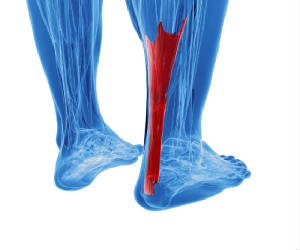 A medical examination has revealed that Lakers’ shooting guard Kent Bazemore has a tear in a tendon in his right foot and will have to have surgery to fix it, meaning that he’ll be out for the rest
of the 2014 season. Bazemore was dribbling along the edge of the court during
a game against the Clippers last week when he suddenly felt a pop in his foot and collapsed. He is scheduled to undergo surgery
to fix the ligament soon. Bazemore is just one of an unusually large number of Lakers players that have been injured this
year, including Kobe Bryant, Pau Gasol, and Xavier Henry. He performed well this year and the team is likely to re-sign him
for next season. The pain from an Achilles tendon injury can last for a long time if you don’t
get it healed properly. One of the best ways to deal with this type of condition is to visit a podiatrist like Dr. Karin Johansson, DPM of New York. Dr. Johansson will identify how bad your injury is and advise you on whether an operation is necessary or not.
What is the Achilles Tendon? The
Achilles tendon is a tendon that connects the lower leg muscles and calf to the heel of the foot. It is the strongest tendon
in the human body, and is essential for making movement possible. Because this tendon is such an integral part of the body,
any injuries to it can cause severe difficulties and should immediately be presented to a doctor. What
are the symptoms of an Achilles Tendon Injury? There are various types of
injuries that can affect the Achilles tendon. The two most common are Achilles tendinitis and ruptures of the tendon.
Achilles Tendinitis Symptoms
- Inflammation - Dull to Severe Pain - Increased blood flow to the tendon -
Thickening of the tendon Rupture Symptoms
- Extreme pain and swelling in the foot - Total immobility Treatment
and Prevention Achilles tendon injuries
are diagnosed by a thorough physical evaluation. Often the doctor will order an MRI to confirm the diagnosis. Treatment will
involve rest, physical therapy, and in some cases, surgery. However, various preventative measures can be taken to avoid these
injuries. For more information about Achilles Tendon Injuries, follow the link below.
If you have any questions, please contact our office located in New York, NY. We offer the newest diagnostic and treatment technologies for all your foot care needs. Read
more about Achilles Tendon Injuries
Tuesday, April 15, 2014
MLB Player Makes Near-Instant Recovery from Ingrown Toenail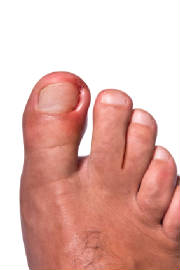 MLB player Avisail Garcia of the White Sox underwent an ingrown toenail removal. White Sox Manager Robin Ventura originally assumed Garcia would need a few days off to recover but the right fielder
surprised his team by returning to the field the next day. Garcia was able to perform without any trouble. “I want to
be consistent and get better,’’ Garcia said. “Put up better numbers and help my teammates.”
During last year’s season Garcia had a .304 batting average and 21 RBIs, earning him
the respect of his fellow players.
Ingrown toenails are a real pain in the foot. If you
have an ingrown toenail, see podiatrist Dr. Karin Johansson, DPM of New York, can help. Dr. Johansson will treat your podiatric needs with the professionalism and care you deserve. Ingrown
Toenails Causes
Ingrown toenails occur when a toenail grows sideways
into the bed of the nail, causing pain, swelling, and possibly infection. There are a number of risk factors for ingrown toenails. Some include cutting your nails
too short, participating in strenuous sports, diabetes, obesity, and fungal infection. Some are genetically predisposed to
ingrown nails, although wearing ill-fitting or damp shoes can exacerbate the problem. Treatment
There are a number of steps you can take to treat ingrown nails: -Let your toenails grow out -Soak the toes in hot water with antibiotic soap or Epsom salts -Placing a piece of cotton under the affected nail may allow the toe to grow up instead of into the nail bed
-Rest with your feet up If however, your pain is severe, or you see red streaks running up your leg, you
should see a podiatrist. Your podiatrist may make a small incision and remove part of the toe nail to relieve the pressure.
A local anesthetic may be used to lessen the discomfort of the operation. Topical medication may also be prescribed
to prevent the regrowth of the problem nail. You will probably have to stay off your feet for a day or so, but should be able
to carry on normal activities quickly.
If you have any questions, please contact our office
located in New York, NY. We offer the newest diagnostic and treatment technologies for all your foot care needs. Read
more about Ingrown Toenails
Wednesday, April 9, 2014
Sixth Grader Suffers Broken Foot but Diagnosis Reveals Osteosarcoma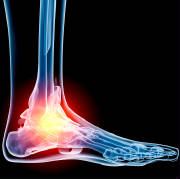 Dylan McCabe, a sixth-grader of the Creekside Christian Academy incurred an injury on Dec. 20, in the beginning of Christmas break when
a large frame fell from a wall and landed directly on his left foot. One month later Tammy McCabe, Dylan’s mother pondered
why her son’s left foot was still swollen when the cast was removed. “We
thought at first it was because he was on crutches and his right leg was doing all the work with his left foot being broken,”
she said. Massages, long walks, and even heating pads were used to mitigate the issue, but nothing worked. Until, another
trip was made to the orthopedist; X-rays revealed Dylan was suffering from a rare form of cancer: osteosarcoma. The bone cancer
was found on his right leg, a tumor measuring 14 inches in length right between his hipbone and knee. “The doctors
said it had probably been growing for six months,” said Tammy McCabe. “Dylan never complained about any pain,
though. It was a blessing that he broke his foot, because we wouldn’t have known otherwise.” A
broken foot can happen to anyone. Fortunately, podiatrist Dr. Karin Johansson, DPM of New York, can help. Dr. Johansson can work with you towards rehabilitating that broken foot and get you back on your feet.
Broken Foot Causes, Symptoms, and Treatment A
broken foot is caused by one of the bones in the foot ‘breaking’, or fracturing. Bones typically break when the
bone is bended, crushed, or stretched beyond its natural capabilities. Usually the location of the fracture indicates how
the break occurred, whether it was through an object, fall, or any other type of injury. Common
Symptoms of Broken Feet: · Bruising
·
Pain · Redness ·
Swelling · Blue (foot) ·
Numbness · Cold ·
Misshapen · Cuts ·
Deformities
Those who are experiencing any of these symptoms, or
suspect that they have a broken foot, should seek medical attention in a center where x-rays can be performed. This is
especially urgent if any of the symptoms include numbness, blue coloring, cold feet, cuts, misshapen toes or deformities as
these indicate more severe cases.
To learn more about broken foot and its treatment, please
follow link below. If you have any questions, please contact our office located in New York, NY. We offer the newest diagnostic and treatment technologies for all your foot care needs. Read
more on Broken Foot Causes, Symptoms, and Treatment
Wednesday, April 2, 2014
Foot Surgery Helps Teen Dance Again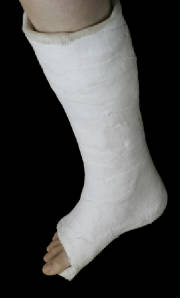 19 year old Matthew Leonardi, has been dancing since he was 4 years old. At the age of 14, Leonardi began experiencing a strange feeling to his ankle.
"I couldn't point [my foot]. It felt like something was blocking it and I didn't have that great flexibility of
pointing and flexing,” Leonardi said. Orthopedic surgeon Dr. Glenn
Pfeffer of USC Glorya Kaufman Dance Medicine Center at Cedars-Sinai Medical Center in Los Angeles diagnosed him with trigonum
syndrome; a rare condition in which excess bone in the ankle is crushed by an injury. According to Pfeffer, the good news
is that once the diagnosis has been made the condition can be corrected through surgery, stated Pfeffer. "Recovery was great. I started pointing and flexing again, like nothing happened, like there
was nothing wrong with it, and I was just like, ‘Oh my gosh, he saved my career,’” Leonardi said.
Surgery is sometimes necessary. If you or a loved one
needs surgery, contact podiatrist Dr. Karin Johansson, DPM of New York, who can help. Dr. Johansson can find the right procedure that would best help treat your foot or ankle related problem.
When Is Surgery
Necessary? Foot and ankle surgery is generally reserved for cases
in which less invasive, conservative procedures have failed to help with the problem. Some of the cases in which surgery may
be necessary are: - Removing foot deformities like bone spurs and bunions
- Severe arthritis that has caused bone issues - Reconstruction to attend injuries caused by accidents or malformations What Types of Surgery Are There? The type of surgery you
receive will be dependent on the nature of the problem you have. Some of the possible surgeries include: - Bunionectomy for painful bunions - Surgical fusion for realignment
of bones - Nerve removal for painful nerve endings To learn more about foot surgery, please follow link below. If you have any questions, please contact our office located in New York, NY. We offer the newest diagnostic and treatment technologies for all your foot care needs. Read
more about Foot Surgery
|